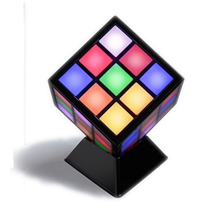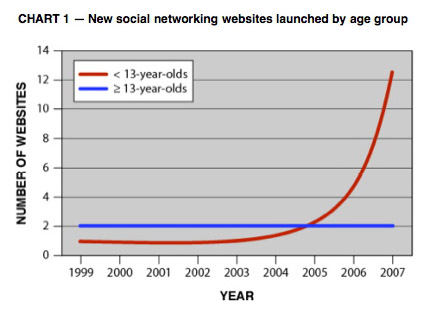 When I first became aware of Peggy Charren, I had been creating children’s media for only a short time. What I learned in those days was that Peggy founded a child advocacy group in 1968 called Action for Children’s Television (ACT). ACT challenged broadcasters to offer endless choices of quality television content for children. Her organization fought for content that was diverse, for all ages, and void of any censorship or hidden agenda. It advocated content rich with benefits for children and as free from the influences of advertising as possible. Ultimately Peggy and her organization pushed legislators to pass the Children’s Television Act in 1990, a law still in effect today that requires television stations to include at least 3 hours of “core” children’s educational content per week and, at the same time, limit the amount of advertising found in children’s programming. Peggy’s vision was bold, her voice strong, and her determination unstoppable.
When I first became aware of Peggy Charren, I had been creating children’s media for only a short time. What I learned in those days was that Peggy founded a child advocacy group in 1968 called Action for Children’s Television (ACT). ACT challenged broadcasters to offer endless choices of quality television content for children. Her organization fought for content that was diverse, for all ages, and void of any censorship or hidden agenda. It advocated content rich with benefits for children and as free from the influences of advertising as possible. Ultimately Peggy and her organization pushed legislators to pass the Children’s Television Act in 1990, a law still in effect today that requires television stations to include at least 3 hours of “core” children’s educational content per week and, at the same time, limit the amount of advertising found in children’s programming. Peggy’s vision was bold, her voice strong, and her determination unstoppable.
I remember the moment I first spoke with Peggy many years ago. I searched online for a day or two to find her phone number, took a guess out of a handful of possibilities, and called her out of the blue. I introduced myself, told her I ran a company that creates learning products for children, and listed a handful of client names to demonstrate the quality of our work. Peggy immediately responded, “Are you one of those religious producers?” I was caught off guard. I didn’t expect her response. One of the clients I mentioned had often been misinterpreted as having religious leanings. “No, that’s not really what our organization is about” I replied. Peggy was sharp, quick, and to the point. I quickly learned that Peggy would tell it like it is, and she would be direct, and sometimes blunt, with me in our discussions. I realized these just might be the qualities needed to change the landscape of children’s media for the better.
Over the years I learned that Peggy loves the theater, that she developed arts programs for school children before ACT, that a member of her family was blacklisted during the McCarthy Era, that her organization had fought off attacks from religious organizations, and that Peggy was awarded the Presidential Medal of Freedom under the Clinton Administration, the highest government honor that can be awarded to a civilian.
After the passing of the Children’s Television Act, Peggy closed down ACT, saying the organization had fulfilled its mission. In the thirteen years since it closed, a lot has changed within the media landscape for children. Today there are 24-hour channels dedicated to children’s content, online videos, screened technology toys, iPods and family cars with individual screens. Having recently read Dade Hayes’ new book, Anytime Playdate, a book that examines the development, research and production of children’s preschool content, it prompted me to check in with Peggy about her views on today’s media landscape. Unlike my first call with her, this time I scheduled an appointment for our conversation.
Scott Traylor: Looking back on the passing of the Children’s Television Act of 1990, do you think it was a success?
Peggy Charren: Fifty-fifty, because that kind of change in how things work is never completely successful.
ST: Do you say fifty-fifty because of the negotiating necessary to pass the Children’s Television Act, that it resulted in making the law weaker than you had hoped?
PC: No, I never expect things to be perfect.
ST: Have the Children’s Television Act and subsequent amendments and rulings been effective?
PC: I think the answer is pretty much ‘no’. In a funny way they’ve been more effective than most people would give them credit for. There are some who think it had no effect at all. A lot of people feel it was better than nothing. When push comes to shove, I don’t think it was really very effective. In a lot of ways it had zero effect.
ST: Do you have any thoughts on how it could become more effective?
PC: Yes, I suppose that the major way to change it is to focus on what we haven’t thought about before. Some people in industry are thinking about how it could be more effective. I think technology may be part of the answer. We haven’t spent enough time thinking about how we could use technology in this regard. When we do the world is going to be more interesting.
ST: ACT was always an advocate for more media choices for kids.
PC: Yes, that’s absolutely true.
ST: Today there are multiple round-the-clock channels dedicated to children as well as video on demand, online offerings, and technology-based games and toys that have screens. What are your thoughts on the degree of choice and the quality of choices today?
PC: I think there’s never enough choice. I think the sense of choice is just very important and we’re not doing enough for kids with that priority. We’ll get along fine anyway but I think the world of children’s media would be more beneficial if we devoted more time to the kind of issues that ACT worried about in the old days. We don’t do that anymore.
ST: What changes have you seen in media advertising to children?
PC: Well, I think it would be nice if there weren’t any media advertising to children. I’ve always thought that and it’s a little hard to just accept the fact that advertising to kids is a reasonable thing to do. I never thought it was reasonable. I’m not a big one on advertising to children. I think that the goal of advertising to kids is wrong and I don’t like it, I never did like it, and I don’t like it now. It’s not that I worry about it being the end of the world, its just that I think it’s an inappropriate goal.
ST: Can you speak to the pros and cons of advertising regulation for broadcasters?
PC: I’m a big one for advertising regulations. I’ve always been focused that way when it comes to advertising. I think advertising doesn’t hurt kids as much as it sounds like it does but I think it’s manipulative and we keep doing it. It’s amazing how little it has changed actually.
ST: How little has changed over the years with regulation?
PC: No, with children’s advertising. In terms of regulation there’s a limit to how much regulation we’re going to see. I think advertising by itself is nauseating… she says mildly.
ST: Let’s continue with this question. It’s said that young children under the age of seven are not capable of understanding the difference between ads and programs, or the persuasive intent of ads.
PC: That’s right, they can’t tell the difference. This must have been the first thing I ever said in my life.
ST: So should the FCC forbid advertising to children?
PC: I think it wouldn’t be a bad idea. Just get rid of it entirely. We almost did it you know. We almost had it. It’s a real shame that it just sort of vanished into the quiet part of everyone’s life. I mean advertising to children is so dumb. It’s just a dumb thing to do.
ST: How do you think changes in ad requirements would impact the range of media available to young children?
PC: Oh I think it could have a big effect actually. I think there’s an opportunity for an enormous effect relating to not selling to children and I don’t know why it’s taken so long. It’s probably my fault.
ST: What do you think of the baby video phenomenon and the Kaiser Family Foundation report that one quarter of children under the age of two have a TV in their bedroom?
PC: Oh I’ve always thought that was idiotic. To set up a baby’s room with a television set in it says more about the parents than it does about anything else. Some day we may find that children will really suffer because of this.
ST: What advice would you offer parents today for making positive media choices for their children?
PC: Let’s see. Let me turn this back to you. What do you think is the most difficult question parents have to answer regarding media and their child?
ST: Lately I’ve been thinking a parent might ask, “Is viewing media hurting my child?”
PC: I think parents have to pay close attention to what’s helping and hurting their child. If parents care enough about their child in terms of their media viewing choices, I think it’s probably not a terribly serious issue.
Peggy and I talked about a number of related topics in the children’s media world. During our conversation we discussed noteworthy figures in the industry. Vicki Rideout, VP of the Kaiser Family Foundation was a strong favorite. Alice Cahn, VP of Social Responsibility for Cartoon Network received high praise for her smarts as well as humor. We also discussed the work of Henry Jenkins, Director of the Comparative Media Studies program at MIT for his thoughts on society and media. Peggy didn’t share her thoughts about who are the leading child advocate voices of today, but it was clear she was on top of the conversations and the people involved in shaping the discussion. Thinking about the challenges of quality media for children today I asked:
ST: Maybe we’re just missing those strong voices today that can fight for children?
PC: I don’t think so. I think that there are other kinds of voices we just let happen. It may never get fixed. People just aren’t upset enough.
Special thanks to Joe Blatt, Alice Cahn, Sue Edelman, David Kleeman, and Ellen Wartella for their help in preparing questions for Peggy. The ACT archives can be viewed at Harvard University’s School of Education in Cambridge, Massachusetts.
Average Rating: 4.7 out of 5 based on 296 user reviews.





 When I first became aware of Peggy Charren, I had been creating children’s media for only a short time. What I learned in those days was that Peggy founded a child advocacy group in 1968 called
When I first became aware of Peggy Charren, I had been creating children’s media for only a short time. What I learned in those days was that Peggy founded a child advocacy group in 1968 called